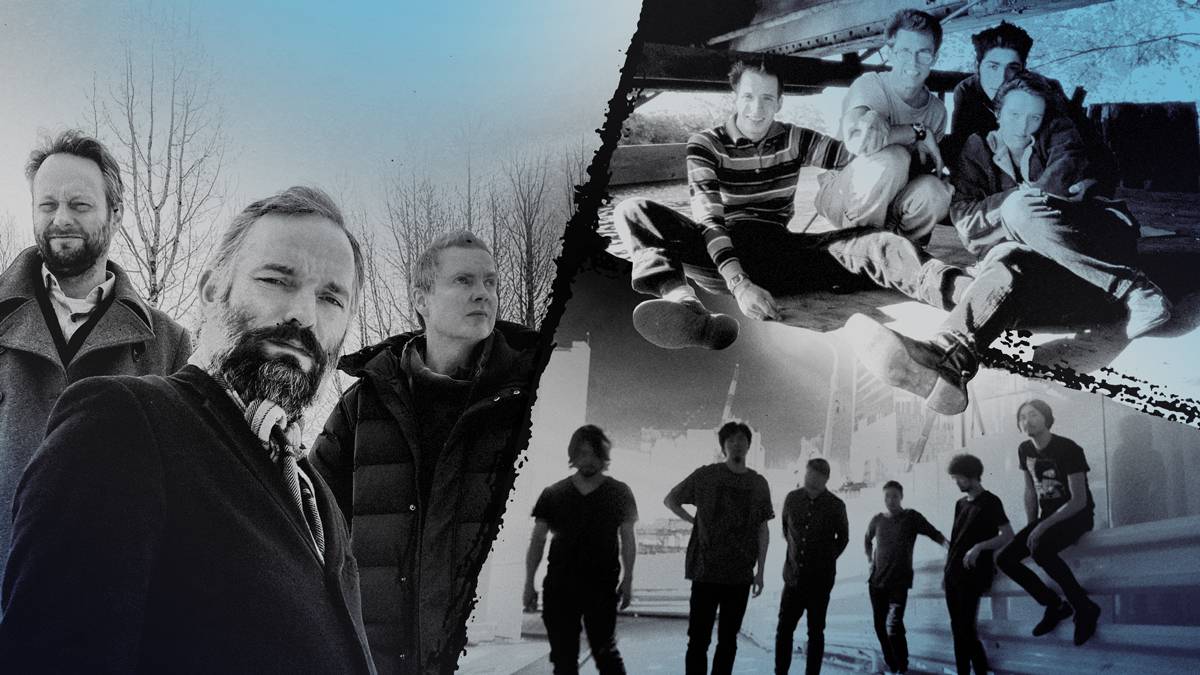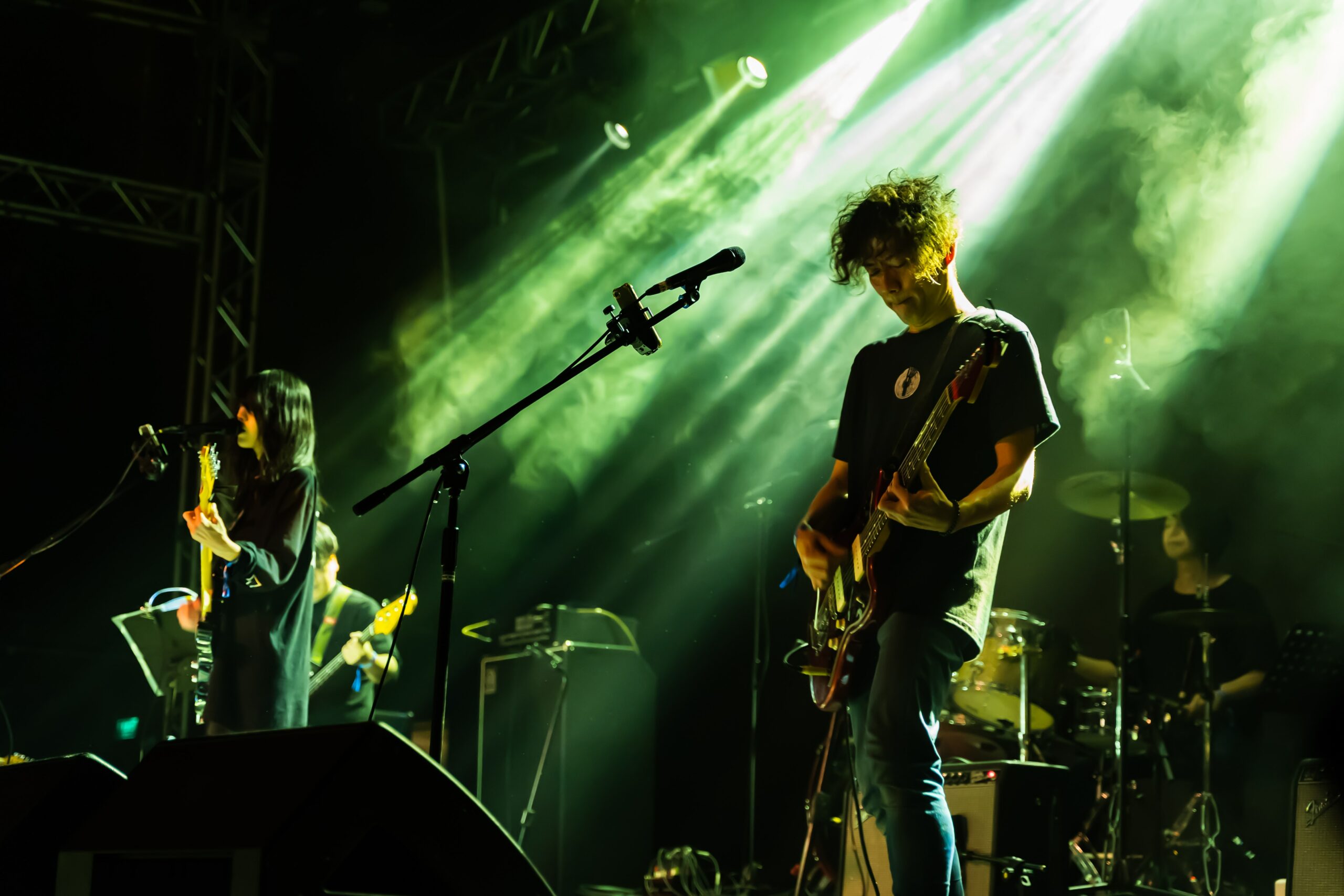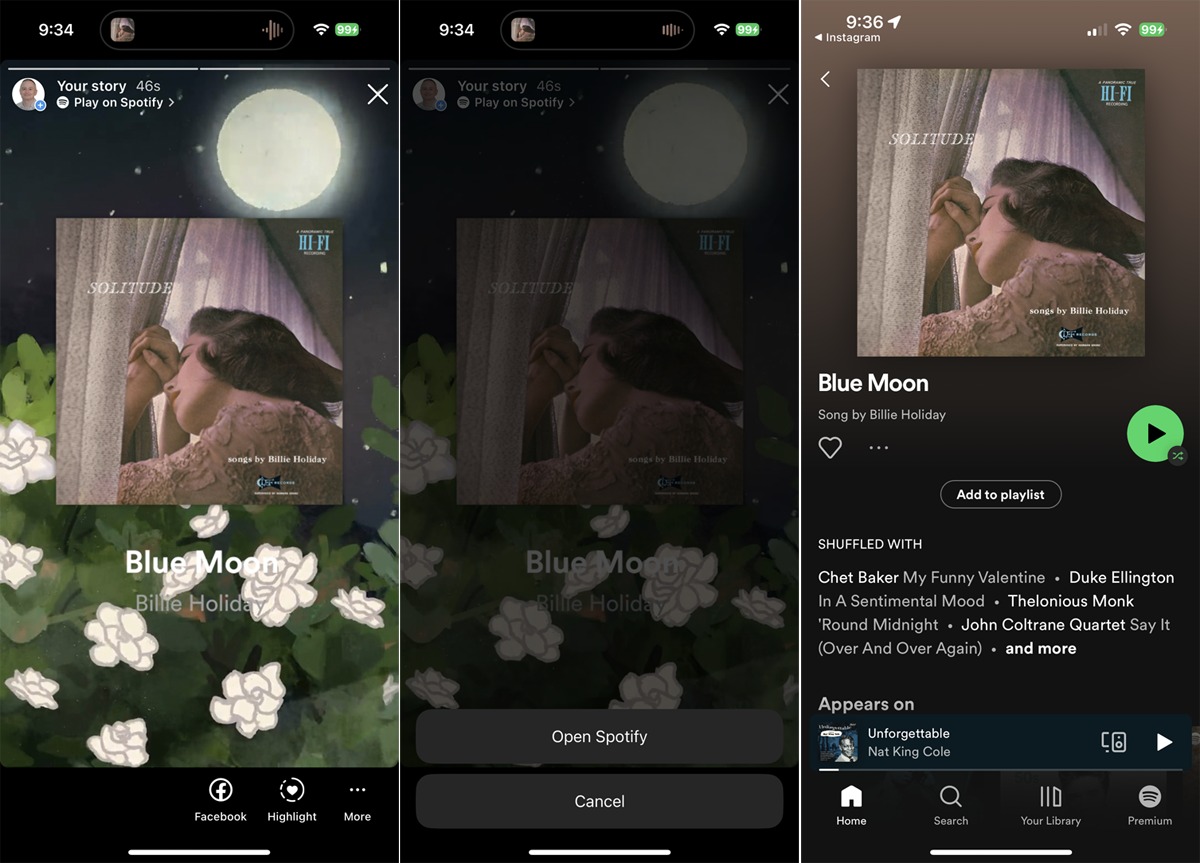

Rock
What Do Music Critics Think Of Post-rock
Modified: January 22, 2024
Discover what music critics think of post-rock, a genre that pushes the boundaries of rock music with its experimental and atmospheric soundscapes.
(Many of the links in this article redirect to a specific reviewed product. Your purchase of these products through affiliate links helps to generate commission for AudioLover.com, at no extra cost. Learn more)
Table of Contents
Introduction
Post-rock, a genre that emerged in the 1990s, has become a crucial part of the alternative music scene. Characterized by atmospheric soundscapes, complex structures, and an absence of traditional song structures, post-rock pushes the boundaries of what rock music can be. However, like any genre, it has its share of critics and supporters.
Post-rock defies easy categorization, making it both fascinating and challenging for music critics. Its unique blend of elements from rock, classical, experimental, and electronic music creates a distinct sonic landscape that transports listeners on an introspective journey. Despite its lack of mainstream commercial success, post-rock has garnered a dedicated and passionate following of fans who appreciate its emotive and immersive qualities.
In this article, we will explore the opinions of music critics concerning post-rock. We will delve into the genre’s origins, influences, characteristics, and delve into both positive and negative viewpoints. Through a comprehensive analysis, we will gain a deeper understanding of the evolving landscape of post-rock criticism.
Definition of Post-Rock
Defining post-rock can be a challenge due to its expansive and ever-evolving nature. However, at its core, post-rock can be understood as a subgenre of rock music that embraces experimentation, texture, and ambiance. It often incorporates elements from various other genres, such as jazz, classical, electronica, and ambient music.
Unlike traditional rock music, which typically follows a verse-chorus structure with vocals as a focal point, post-rock tends to shift the focus towards instrumental compositions. It seeks to create an immersive sonic experience by employing layered and carefully crafted instrumentals, intricate arrangements, and dynamic build-ups.
A significant characteristic of post-rock is its storytelling nature. It aims to convey emotions and narratives through music, transcending language barriers and relying on instrumental expression. Instead of relying on lyrics, post-rock uses complex musical structures, shifts in dynamics, and the interplay between instruments to create a captivating and visceral journey for the listener.
Post-rock also embraces experimentation and unconventional techniques. It encourages musicians to push musical boundaries, incorporating unconventional instruments, found sounds, and even incorporating elements of noise into the music. This experimental approach allows post-rock artists to constantly redefine the limits of the genre.
While post-rock may vary in style and approach, it is the sense of exploration and the ability to evoke intense emotions that tie the genre together. Whether it’s through soothing and melancholic melodies or climactic and cathartic crescendos, post-rock takes listeners on a sonic adventure that transcends traditional rock boundaries.
Origins and Influences
The roots of post-rock can be traced back to the 1980s and early 1990s when bands such as Talk Talk, Slint, and Bark Psychosis began experimenting with alternative rock sounds and structures. These pioneering acts laid the foundation for what would later become known as post-rock.
One of the major influences on post-rock is the genre of krautrock, which emerged in Germany in the late 1960s. Krautrock bands like Can and Neu! embraced repetitive rhythms, extended improvisations, and the use of electronic instruments, all of which would later influence the sound and approach of post-rock artists.
Another crucial influence on post-rock is the minimalist and repetitive compositions of composers like Steve Reich and Philip Glass. Their use of repetitive patterns and subtle variations in their works inspired many post-rock musicians to explore similar techniques, creating hypnotic and mesmerizing soundscapes.
In addition to these influences, post-rock is also indebted to the shoegaze movement of the late 1980s and early 1990s. Bands like My Bloody Valentine and Slowdive embraced swirling layers of guitars, ethereal vocals, and a dreamy sonic aesthetic, which resonated with the atmospheric and textural elements of post-rock.
Furthermore, classical music and its emphasis on composition and orchestration have played a significant role in shaping the sound of post-rock. Bands like Godspeed You! Black Emperor and Explosions in the Sky draw inspiration from classical music’s use of dynamics, grandiosity, and emotional depth, incorporating these elements into their own distinct sound.
Overall, post-rock is a genre that arises from a diverse range of influences, spanning across different genres and musical movements. It is a fusion of rock, experimental, electronic, classical, and ambient music, as well as a collective effort by pioneering musicians to push the boundaries of what rock music can achieve.
Characteristics of Post-Rock Music
Post-rock is characterized by a unique set of musical traits that distinguish it from other genres. These characteristics contribute to the immersive and introspective nature of post-rock music, creating a sonic experience that captivates listeners.
One key characteristic of post-rock is its use of expansive and atmospheric soundscapes. Post-rock bands often employ layers of guitars, keyboards, and other instruments to create a lush and multi-dimensional sonic landscape. These rich textures build upon each other, creating a sense of depth and complexity.
Dynamics play a crucial role in post-rock. Songs often start softly and gradually build in intensity, reaching climactic peaks before returning to quiet and reflective passages. This dynamic contrast adds to the emotional impact of the music, creating a sense of tension and release.
Instrumental proficiency is highly valued in post-rock. Musicians showcase their technical skill through intricate and complex arrangements. Guitarists might utilize various effects pedals to create unique tones and textures, while drummers weave intricate rhythms that drive the songs forward.
Repetition is another hallmark of post-rock. Bands employ repetitive motifs and patterns, which create a hypnotic and mesmerizing effect. This repetition allows listeners to become fully immersed in the music, allowing the subtle variations and nuances within the repetition to unfold.
Post-rock often prioritizes the use of unconventional song structures, eschewing traditional verse-chorus formats. Instead, post-rock compositions are characterized by long, sprawling tracks that develop and evolve over time. This allows post-rock musicians to explore different moods, themes, and textures within a single piece of music.
Emotionally charged and evocative, post-rock seeks to convey a wide range of feelings without relying on lyrics. Through the interplay of instruments, post-rock artists are able to create a deeply emotive experience that resonates with listeners on a visceral level.
Overall, the characteristics of post-rock come together to create a unique and immersive musical experience. It is a genre that defies easy categorization and invites listeners on a journey of introspection and emotional exploration.
Criticism of Post-Rock
Like any genre of music, post-rock has faced its fair share of criticism from various perspectives. Some critics argue that the genre can be self-indulgent and overly introspective, lacking the accessibility and immediate gratification found in more mainstream styles of music.
One common critique is that post-rock can be perceived as repetitive and monotonous. The focus on repetitive motifs and lengthy compositions may result in a lack of variety or progression within a song. Critics argue that this can lead to a sense of tedium or boredom for some listeners who prefer more dynamic and varied musical experiences.
Another criticism of post-rock is that it can be overly inaccessible and esoteric. The genre’s experimental and unconventional nature may alienate listeners who are accustomed to more traditional song structures and familiar hooks. The absence of vocals and lyrics can also create a barrier for some listeners who rely on lyrics to connect with music on a deeper level.
Additionally, some critics argue that post-rock can be self-indulgent and overly pretentious. The genre’s penchant for long, sprawling compositions and its emphasis on technical proficiency may lead to the perception that post-rock musicians prioritize their own virtuosity over creating music that resonates with a wider audience.
Furthermore, the lack of mainstream commercial success for many post-rock bands has been a point of criticism. Critics argue that this limited appeal is indicative of a lack of broad appeal and relevance in today’s music industry. This criticism often stems from the belief that music should be accessible and relatable to a wide range of listeners to be considered successful or meaningful.
However, it is important to note that these criticisms are not unanimous, and many fans and critics value the very aspects that have been criticized. Post-rock’s repetitive nature, introspective atmosphere, and lack of vocal lyrics are precisely what draw some listeners to the genre, as they provide a unique and immersive listening experience that allows for personal interpretation and emotional connection.
Ultimately, the criticisms of post-rock are subjective and reflect personal preferences and expectations. While the genre may not resonate with everyone, its dedicated fan base and continued growth demonstrate that there is a significant audience who appreciates the genre’s distinctive qualities and innovative approach to music.
Positive Views of Post-Rock
Post-rock has garnered a passionate and dedicated following of fans who appreciate its unique qualities and innovative approach to music. Supporters of the genre emphasize its ability to evoke intense emotions, create immersive sonic landscapes, and break free from traditional song structures.
One of the main reasons post-rock resonates with its listeners is its ability to convey a wide range of emotions and create a deeply introspective atmosphere. The absence of lyrics allows listeners to interpret the music in a personal and subjective way, connecting with it on a deeply emotional level. Post-rock’s expansive and atmospheric soundscapes provide a backdrop for contemplation, introspection, and self-reflection.
Post-rock’s emphasis on instrumental compositions is also celebrated by its supporters. The lack of vocals allows the music to be a universal language, transcending cultural and linguistic barriers. The absence of lyrics also encourages listeners to focus on the interplay between instruments, the layers of sound, and the subtle nuances within the music.
Furthermore, post-rock’s disregard for traditional song structures gives it a sense of freedom and unpredictability. Instead of adhering to verse-chorus-bridge formats, post-rock compositions develop and evolve over time, taking listeners on a journey. This dynamic and progressive nature of the music allows for a sense of discovery, as listeners become fully engaged in the unfolding narrative of the music.
Post-rock is also celebrated for its innovation and willingness to push the boundaries of what rock music can achieve. Through experimentation with unconventional instrumentation, incorporation of elements from various genres, and the use of intricate arrangements, post-rock constantly challenges the norms and creates a space for musical exploration.
Moreover, post-rock’s focus on creating immersive and complex soundscapes has led to collaborations with other art forms, such as film and visual art. The genre’s ability to evoke vivid imagery and create a sense of atmosphere has made it a popular choice for filmmakers seeking to capture the emotional essence of their stories.
Overall, the positive views of post-rock emphasize its ability to create a unique and immersive musical experience. Its emotive qualities, experimental approach, and ability to transcend traditional song structures have won over a dedicated fan base and continue to inspire both musicians and listeners alike.
Negative Views of Post-Rock
While post-rock has a dedicated fan base, it is not without its critics. There are some who have expressed negative views towards the genre, citing various reasons such as its perceived repetitiveness, lack of accessibility, and self-indulgence.
One common criticism of post-rock is its tendency towards repetition. Critics argue that the genre’s reliance on repetitive motifs and patterns can result in a lack of variety and progression within the music. This repetitive nature may lead to a sense of monotony or boredom for some listeners who prefer more dynamic and varied musical experiences.
Accessibility is another point of contention for some critics. The experimental and unconventional nature of post-rock can make it challenging for some listeners to connect with or appreciate. The absence of traditional song structures, vocal hooks, and lyrics may create a barrier to entry for those who prefer more straightforward and easily digestible music.
Additionally, some critics argue that post-rock can be self-indulgent and overly pretentious. The genre’s penchant for long, sprawling compositions and instrumental virtuosity may be seen as prioritizing artistic expression over creating music that is accessible and relatable to a wider audience.
Some detractors also point to the limited commercial success of many post-rock bands as evidence of the genre’s lack of broad appeal. They argue that the genre’s niche fan base and relatively underground status suggest a limited relevance in today’s music industry, where mainstream success and widespread popularity often dictate the value of a musical genre.
Furthermore, the absence of vocals and lyrics in post-rock can be a point of criticism. Critics argue that the lack of vocal melodies and lyrical narratives can make it difficult for listeners to connect with the music on an emotional or personal level, as lyrics often provide a point of identification and resonance.
Despite these negative views, it is important to note that music taste is subjective, and what may resonate with one person may not with another. While post-rock may not appeal to everyone, its distinct qualities continue to attract a dedicated fan base who appreciate its immersive soundscapes, introspective nature, and willingness to push the boundaries of traditional rock music.
It is also worth noting that the criticisms of post-rock are not universal, and many listeners and critics value the genre precisely for the aspects that are criticized. The repetitive nature, lack of vocals, and experimental tendencies are seen by supporters as strengths that allow for unique and immersive musical experiences.
In the end, the negative opinions of post-rock should be seen as a reflection of personal preferences rather than a definitive judgment on the genre as a whole. Music is a diverse and multifaceted art form, and different genres resonate with different audiences based on individual tastes and preferences.
The Evolution of Post-Rock Criticism
Since its emergence in the 1990s, post-rock has undergone a significant evolution both in terms of its musical landscape and the way it is perceived and critiqued. The genre has garnered a range of opinions and perspectives from critics, reflecting the changing dynamics within the music industry and the evolving tastes of listeners.
In its early years, post-rock faced initial resistance and confusion from critics who struggled to categorize and define the genre. Some critics dismissed it as a niche and inaccessible genre, while others praised its experimental nature and celebrated its departure from traditional rock music conventions.
As post-rock gained traction and recognition, critical opinions became more nuanced. There emerged a greater understanding and appreciation for the genre’s unique qualities, such as its ability to create immersive sonic landscapes and convey emotions through instrumental compositions.
Over time, post-rock criticism has become more diverse, with critics offering a range of perspectives on the genre. Some critics have focused on analyzing the technical intricacies and compositional approaches of post-rock bands, shedding light on the experimental and innovative aspects of the music.
Others have delved into the cultural and historical context of post-rock, exploring its influences and connections to other music genres. By contextualizing post-rock within a broader musical landscape, these critics aim to deepen the understanding and appreciation of the genre among a wider audience.
Furthermore, the rise of the internet and the democratization of music criticism has allowed for a wider range of voices and opinions to emerge. Online platforms, music blogs, and social media have provided a space for both established critics and passionate enthusiasts to contribute to the discourse surrounding post-rock.
The evolution of post-rock criticism also reflects the genre’s own evolution. As post-rock has expanded and embraced a variety of subgenres and stylistic approaches, critics have adapted their analysis to encompass this diversity. The genre’s fusion with elements of electronic music, jazz, and classical has introduced new perspectives and avenues for exploration within criticism.
Additionally, post-rock criticism has become more inclusive in terms of highlighting diversity within the genre. Critics have shifted their focus towards exploring the works of underrepresented artists, highlighting the contributions of women, people of color, and artists from non-Western countries in shaping the genre’s evolution.
As with any genre, post-rock continues to provoke varied and sometimes polarizing opinions. Critics will continue to debate the merits and shortcomings of the genre, each offering their unique perspective based on personal tastes and preferences. The ongoing evolution of post-rock criticism reflects the ever-changing nature of music and the diverse range of interpretations and experiences it can evoke.
Conclusion
Post-rock has emerged as a compelling and influential genre within the alternative music scene. Its unique blend of atmospheric soundscapes, complex compositions, and emotive qualities have captivated listeners and sparked critical discussions. While facing both positive and negative views, post-rock remains a genre that pushes the boundaries of rock music.
The criticism surrounding post-rock reflects the diversity of opinions within the music community. Some critics applaud post-rock’s ability to create immersive and introspective experiences, its experimentation, and its departure from traditional song structures. They value its emotional depth and the instrumental expression that transcends language barriers.
On the other hand, post-rock’s detractors criticize its perceived repetitiveness, lack of accessibility, and self-indulgence. They argue that its unconventional nature and absence of vocals and lyrics make it challenging for some listeners to connect with on a deeper level. Furthermore, the limited commercial success of many post-rock bands is seen as evidence of its limited appeal.
However, amid the diverse opinions, it is important to recognize that music is subjective, and what resonates with one person may not with another. Post-rock’s dedicated fan base stands as a testament to its ability to create immersive and emotive musical experiences. The genre’s continued growth, innovation, and collaborations in the realms of film and visual arts demonstrate its enduring impact.
Moreover, as post-rock has evolved, so has its criticism. From initial confusion and dismissal, critics have developed a more nuanced understanding of the genre’s unique qualities. They have explored the technical intricacies, cultural influences, and wider musical landscape within which post-rock thrives.
The rise of the internet has allowed for a broader range of voices to contribute to the discourse surrounding post-rock. This diversity of perspectives has expanded the conversation and brought attention to underrepresented artists within the genre.
In conclusion, post-rock continues to captivate listeners and challenge conventions within the alternative music scene. Its immersive soundscapes, emotional depth, and departure from traditional song structures make it a genre that evokes strong reactions. As the genre and its criticisms continue to evolve, post-rock remains a vital and influential force in the musical landscape.











